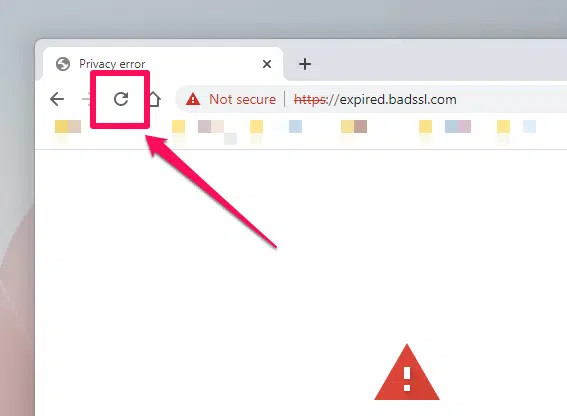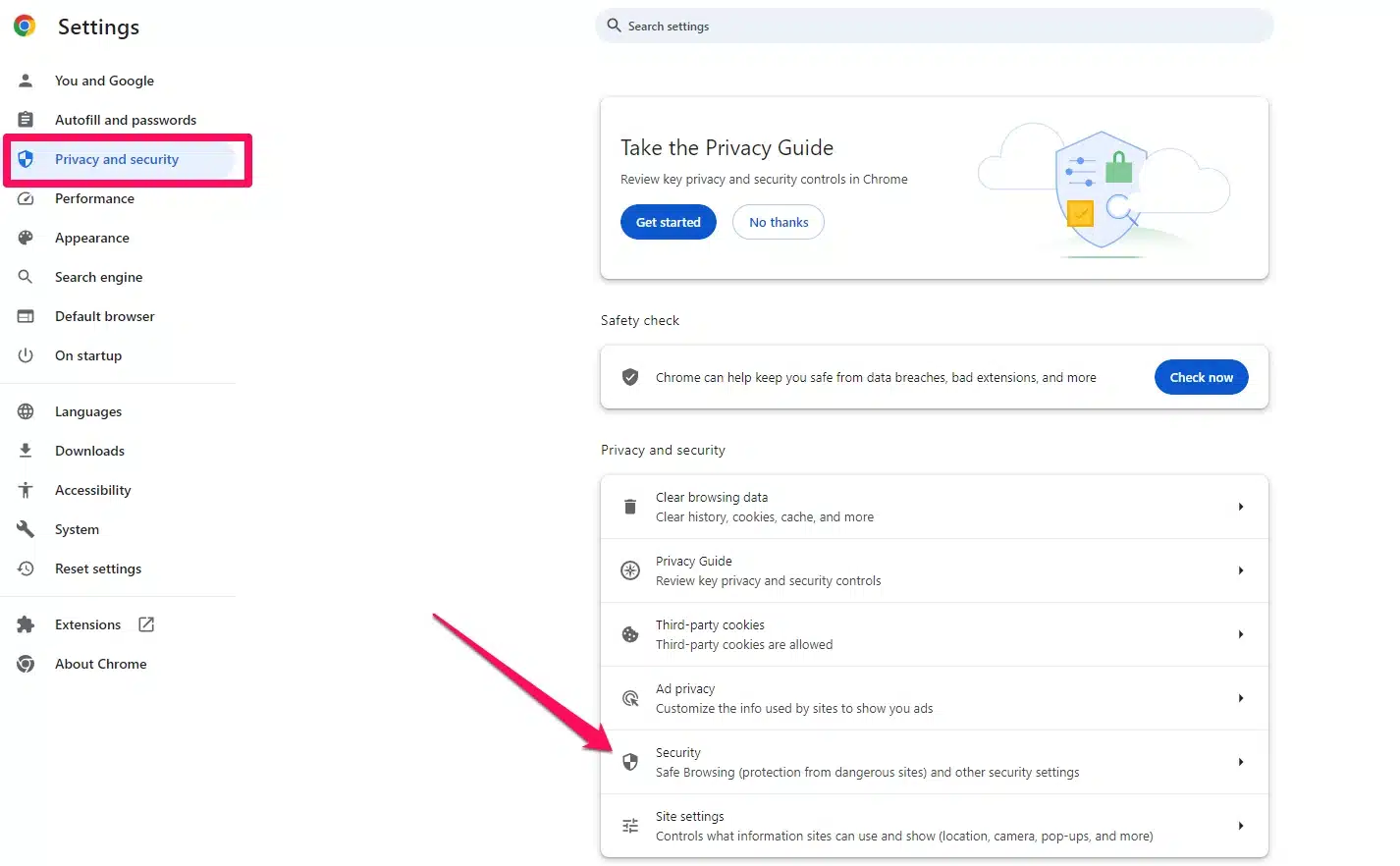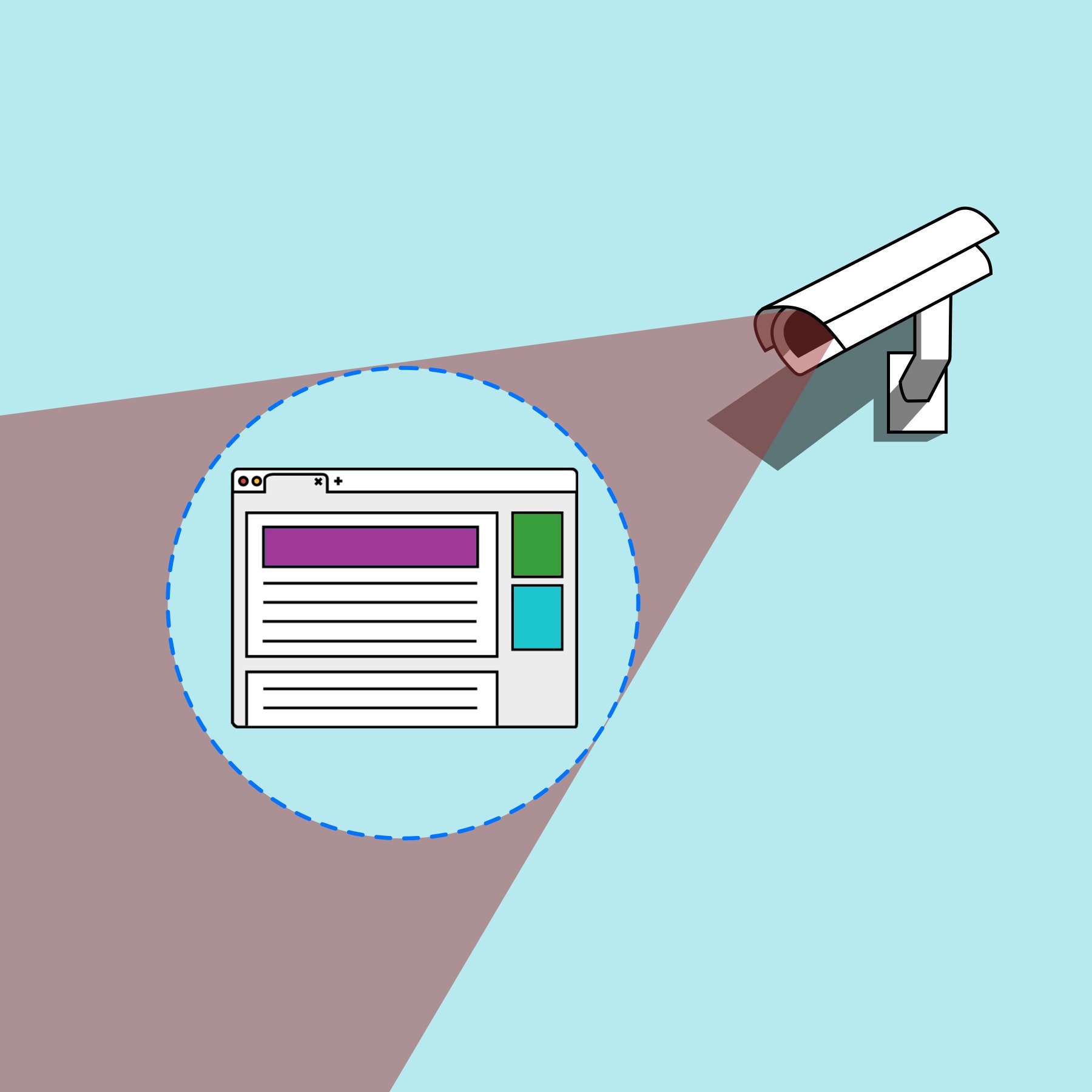
|
IN BRIEF
|
Managing your browser privacy settings is essential for a secure and seamless online experience. As web users, we often encounter various privacy errors that can hinder our browsing sessions. Whether it’s frustrating messages like “Your connection is not private” or unexpected redirects, knowing how to adjust your settings is vital. This guide will explore effective methods to troubleshoot and enhance your browser privacy, ensuring you can navigate the web safely and confidently.
In the digital age, maintaining your privacy while browsing is more critical than ever. This article delves into various methods for fixing browser privacy settings across popular web browsers, highlighting the benefits and drawbacks of each approach. From resetting your settings to adjusting specific privacy controls, it’s essential to understand how these changes can impact your online experience.
Advantages
A key advantage of fixing browser privacy settings is the enhance control it provides over your personal data. Users can tailor their browser to limit tracking and improve security. Adjusting settings such as disabling third-party cookies and enabling “Do Not Track” requests makes it more challenging for advertisers and websites to gather data on your browsing habits.
Furthermore, by regularly reviewing and adjusting these settings, you can also reduce the risk of security issues such as the “Your Connection Is Not Private” error. A well-maintained browser can help prevent exposure to phishing sites and other online threats. You can learn more about resolving this error here.
Disadvantages
However, there are some disadvantages to consider. First, frequently adjusting browser privacy settings can lead to a less personalized browsing experience. Features such as autofill or tailored content may be limited, which can result in a more generic internet experience.
Moreover, while enhanced privacy settings increase your security, they can sometimes lead to inconvenience. Users may find themselves needing to enter personal information repeatedly for sites they’ve visited before or encountering blocked content. Furthermore, overly strict privacy settings can lead to issues with accessing certain services effectively. Browsers may fail to display content if the sites cannot set cookies. For strategies on managing these settings, check this guide.
Maintaining optimal browser privacy settings is essential for ensuring your online security and protecting your personal information. This guide provides steps to help you adjust your privacy settings across different browsers effectively. By following these tips, you can navigate common privacy issues and enhance your browsing experience.
Adjusting Chrome Privacy Settings
To start, you will want to access your Google Chrome settings. Open Chrome on your computer, then click on the three dots in the top right corner and select Settings. Navigate to Privacy and security on the left sidebar, and you can adjust various options here. This includes clearing your browser cache and cookies to fix potential privacy errors.
Manage Privacy Options
In the Privacy and security section, review settings such as Clear browsing data, where you can delete past cache or cookies that may be causing conflicts. Consider disabling unnecessary extensions one by one to identify any that may be interfering with your privacy. For information on disabling certain features, visit the Google Chrome Help page.
Addressing Privacy Errors
If you encounter privacy errors, such as “Your connection is not private”, troubleshooting steps include reloading the page, checking for expired SSL certificates, or clearing your browser cache. If the issue persists, you can temporarily disable the SSL scan feature to see if that resolves the problem. For further assistance, consider following detailed guides available, like those found at Avast’s Privacy Fix Guide.
Reset Your Browser Settings
If privacy issues continue, you might want to reset your browser to its default settings. In Chrome, navigate back to the Settings menu, and scroll down to the bottom to find Reset and clean up. Click on this option and select Restore settings to their original defaults. For a more detailed process, refer to the Xfinity Support Page.
Managing Privacy in Other Browsers
Privacy settings can vary across different browsers. If you’re using browsers like Microsoft Edge, it’s essential to review the privacy options specific to that platform. For example, you might want to access the hidden settings menu to manage your privacy features, as described in this article on fixyourbrowser.com.
Staying Updated on Best Practices
Lastly, staying informed about best privacy practices is crucial. Regularly check for updates and guides, such as those shared in community discussions on platforms like Reddit (r/browsers). These resources can keep you in the loop about the latest security measures you can take to safeguard your privacy.

Adjusting your browser privacy settings is crucial to protecting your personal information online. This guide provides helpful tips on managing your privacy settings effectively across different browsers, ensuring you browse with confidence and security.
Accessing Browser Privacy Settings
To begin fixing your privacy settings, first, you need to navigate to the appropriate menu in your browser. In Google Chrome, you can access these settings by opening the browser, clicking on the three dots at the top right corner, selecting Settings, and then going to the Privacy and security section. Here, you will find various options to manage your privacy effectively.
Managing Cookies and Cache
One important aspect of browser privacy is managing cookies and cache. You can clear these by going to the Privacy section and selecting Clear browsing data. It’s wise to clear your cache and cookies regularly to enhance security and performance. For more privacy tips, you can visit Tech Safety.
Adjusting Security Settings
Once you’re in the Privacy and security section, consider adjusting your security settings. Ensure that options like Send a “Do Not Track” request are enabled. This helps signal to websites that you prefer to keep your browsing activity private. Learn more about managing these settings at Google’s support page here.
Disabling Extensions
Extensions can sometimes interfere with your privacy settings. To troubleshoot privacy issues, try disabling them one by one to isolate any that may be causing conflicts. This will help maintain your browser’s functionality while ensuring your privacy is intact.
Resetting Browser Settings
If you’ve made numerous changes and things seem more complicated, don’t hesitate to reset your browser settings to their default state. In Chrome, go to Settings, scroll down to Advanced, and find the option to reset your settings. This can solve many issues and improve privacy.
Troubleshooting Privacy Errors
To fix common privacy errors like “Your connection is not private”, make sure your browser is updated and check network settings. For further guidance on this topic, check the comprehensive guide at Host4Geeks.
Adjusting browser privacy settings is essential for a secure online experience. Ensure that you regularly revisit these settings and make necessary changes as required. By staying informed and proactive, you can enjoy a safer browsing experience.
Privacy Settings Adjustment Techniques
| Action | Details |
| Check Site Permissions | Go to Chrome Settings > Privacy and security > Site settings to manage permissions. |
| Clear Cache | Access Settings > Privacy and security > Clear browsing data to remove cache and cookies. |
| Adjust ‘Do Not Track’ | Navigate to Settings > Privacy and security > Send a “Do Not Track” request to websites. |
| Disable Extensions | Turn off browser extensions individually to identify any conflicting ones. |
| Reset Settings | Restore Chrome to its default settings via Settings > Advanced > Reset and clean up. |
| Manage Autofill | Go to Settings > Autofill and passwords to adjust your saved information settings. |
| Sync Settings | Turn off sync for datasets in Settings > You and Google > Sync and Google services. |
| Modify Security Settings | Access Settings > Privacy and security > Security to adjust safety features. |

How to Fix Browser Privacy Settings
Many users often find themselves confused with their browser privacy settings, leading to potential security issues. One effective approach to remedy this is to regularly review your privacy settings. By accessing the settings menu of your browser, you can identify aspects that may need adjustments, such as the Do Not Track feature, which provides you with enhanced privacy while browsing.
Another common issue is the persistent “Your connection is not private” warning. This often occurs due to SSL certificate problems or strict privacy settings. To resolve this, try clearing your browser cache and cookies or temporarily disabling any SSL scans performed by security software. These actions can help restore access to sites blocked due to privacy settings.
Additionally, users frequently encounter problems when changing their privacy settings, such as disabling certain permissions, which may inadvertently restrict access to websites. To address this, one can systematically re-enable permissions one at a time, allowing you to pinpoint any specific setting that may be causing the issue.
Moreover, many users overlook browser extensions that may interfere with their settings. It is highly advisable to disable extensions individually to determine if any are contributing to conflicts. Once identified, these can either be adjusted or removed entirely.
Lastly, always keep your browser up to date to benefit from the latest features and security enhancements. Regular updates often include improvements to privacy controls that can help optimize your browsing experience and keep you secure online.
In an age where online security and privacy are paramount, adjusting your browser privacy settings has never been more essential. This guide outlines effective steps to fix and enhance your privacy settings within popular web browsers, ensuring that your online experience remains secure and personalized.
Understanding Browser Privacy Settings
Before diving into specific changes, it’s essential to understand what browser privacy settings entail. These settings allow users to manage how their information is collected, used, and shared while browsing the internet. They include options to control cookie management, tracking, and browser permissions, which ultimately contribute to a safer online environment.
Accessing Privacy Settings
To begin adjusting your settings, you first need to access the privacy section of your browser:
- Google Chrome: Open Chrome, click on the three dots in the upper right corner, and select Settings. Navigate to Privacy and security.
- Mozilla Firefox: Click the three horizontal lines, go to Options, and select Privacy & Security.
- Microsoft Edge: Click the three dots, choose Settings, then Privacy, search, and services.
Adjusting Cookie Settings
Cookies play a crucial role in how websites interact with users, but not all cookies are beneficial. Adjust your cookie settings to block third-party cookies which can track user behavior across multiple sites:
- Choose to block third-party cookies only, allowing first-party cookies to ensure site functionality.
- Consider periodically clearing your cookies to minimize data retention on your device.
Enabling Do Not Track
The Do Not Track request is a feature that informs websites not to track user activity. To enable this option:
- In Google Chrome, navigate to Privacy and security, and toggle the “Send a ‘Do Not Track’ request” option.
- In Firefox, find it under Privacy & Security and check the Do Not Track option.
However, it’s essential to note that not all websites honor this request.
Managing Permissions
Browser permissions control what websites can access on your device. Regularly review and modify permissions to limit unnecessary access:
- In your browser settings, visit the Site settings section to grant or revoke permissions such as location, camera, and notifications.
- Be cautious about granting access to sites that do not require it for functionality.
Disabling Extensions
Sometimes, browser extensions can interfere with your privacy settings or may track your data.
- Disable extensions one by one to identify any that might be causing privacy issues.
- Consider removing any unnecessary or untrusted extensions to strengthen browser security.
Clearing Cache and Data
Another important step is clearing your browser’s cache and other data regularly:
- Go to your privacy settings and choose options to clear your browsing history, cache, and cookies.
- This can help solve many browser issues and enhance privacy by removing stored data that may lead to tracking.
Staying Updated
Ensure that your browser is always up to date to benefit from the latest security and privacy enhancements:
- Check for updates regularly or enable automatic updates to keep your browser secure.
- Outdated browsers are more vulnerable to security threats, emphasizing the necessity for updates.

How to Fix Browser Privacy Settings
When encountering issues with your browser’s privacy settings, it’s crucial to take a systematic approach to resolve them. The first step involves accessing your browser’s settings menu, where you can review and adjust your privacy preferences. Ensure that options such as ‘cookies,’ ‘site settings,’ and ‘tracking prevention’ are set according to your comfort level.
Clearing your browser cache and cookies can also help fix relevant privacy errors. Over time, accumulated data can lead to conflicts and malfunctions, particularly in the browsing experience. This can be achieved through the settings menu, ensuring a clean slate for your future browsing activities.
In many cases, extensions or add-ons installed in your browser can inadvertently compromise your privacy settings. To identify the culprits, disable extensions one by one while monitoring any changes in behavior. This can help isolate problematic extensions and restore your preferred settings.
If your connection is still flagged as ‘not private,’ consider resetting your browser to its default settings. This process can eliminate any incorrect modifications that might have been made in the past. It’s essential to note that resetting the browser will remove all saved preferences, so be sure to back up critical information first.
Lastly, keeping your browser up to date is crucial for maintaining optimal privacy. Software updates often include enhanced security features and bug fixes aimed at improving user experience and privacy. By regularly checking for updates, you ensure that your privacy settings are both current and effective.
Frequently Asked Questions about Fixing Browser Privacy Settings
How can I manage my privacy settings in Google Chrome? Start by opening Chrome on your computer. Click on the more options icon at the top right, then navigate to Settings. From there, select Privacy and security to access the relevant options.
What steps can I take if I encounter a “Your Connection Is Not Private” error? To resolve this issue, you can try resetting Chrome settings, clearing your browser cache, and ensuring that your internet connection is secure.
How do I adjust my ad privacy settings? Go to your Chrome settings, and under Privacy and security, adjust your ad settings by selecting the relevant options that control how your data is used for ads.
What should I do if a website isn’t opening due to privacy settings? Check if any extensions are conflicting with your settings by disabling them one by one. You can also try resetting your privacy options to default.
Can resetting Chrome help in fixing privacy settings? Yes, you can reset Google Chrome to its default settings, which often resolves issues related to convoluted privacy settings.
How do I clear my browser cache and cookies? Navigate to Settings > Privacy and security > Clear browsing data. Select cache and cookies, then click clear to enhance your browser’s performance and privacy.
What privacy features should I enable for better security? Make sure to enable features like Do Not Track and regularly review your privacy settings to control how your data is shared.